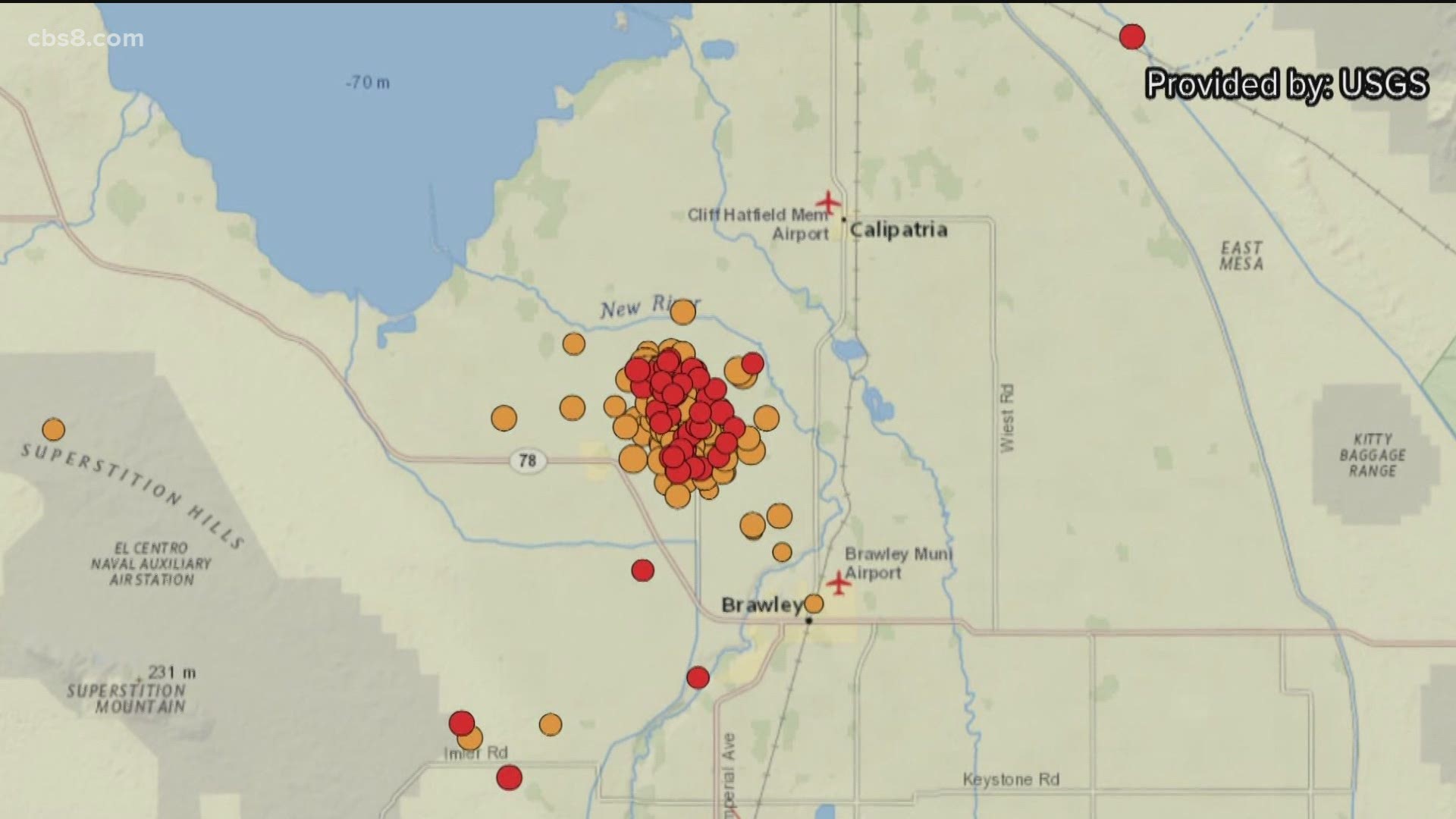IMPERIAL COUNTY, Calif. — A swarm of earthquakes hit south of the Salton Sea in Imperial County Wednesday and continued into Thursday near Westmorland, Calif. The strongest was a magnitude 4.9 Wednesday evening, which was felt in parts of San Diego and Tijuana.
The U.S. Geological Survey defines a swarm as “a sequence of mostly small earthquakes with no identifiable mainshock. Swarms are usually short-lived, but they can continue for days, weeks, or sometimes even months.”
“For those of us everywhere else in the U.S., we live on continents, but out there, they're living on seafloor,” explained geologist Pat Abbott, professor emeritus at San Diego State University. “The warm rock doesn't store up the huge amounts of energy that you would get in older, colder, brittle rocks and so when something does begin to move, it tends to make a swarm.”
The U.S.G.S. predicted there is a 90% chance the swarm will continue over the next week and could produce earthquakes up to a magnitude 5.4. There is a .33% chance it could produce a magnitude a 7.0 or larger earthquake.
It is normal for swarms to occur in Imperial County. Westmorland, and the surrounding area, have had swarms that can produce hundreds or even thousands of small earthquakes. Previous swarms lasted up to 20 days.
“[It’s like when a] landslide comes and there's more shifting, shifting, shifting, and then ultimately the land gets stable. Well, we'll think about that similar kind of thing below the ground. We do enough movements, and we get back more towards that equilibrium. And then we know that equilibrium will be disturbed again, maybe next year or two years, but temporary equilibrium,” explained Abbott.
Westmorland is neither on the San Andreas nor Imperial fault, so the swarm does not necessarily mean there will be increased seismic activity elsewhere, including the so-called “big one,” a nickname for a 7.8 magnitude or higher earthquake that is expected along the San Andreas fault.
“It's always a possibility that this might destabilize and cause one of those to move,” said Abbott. “History tells us that these swarms are usually unique events.”

